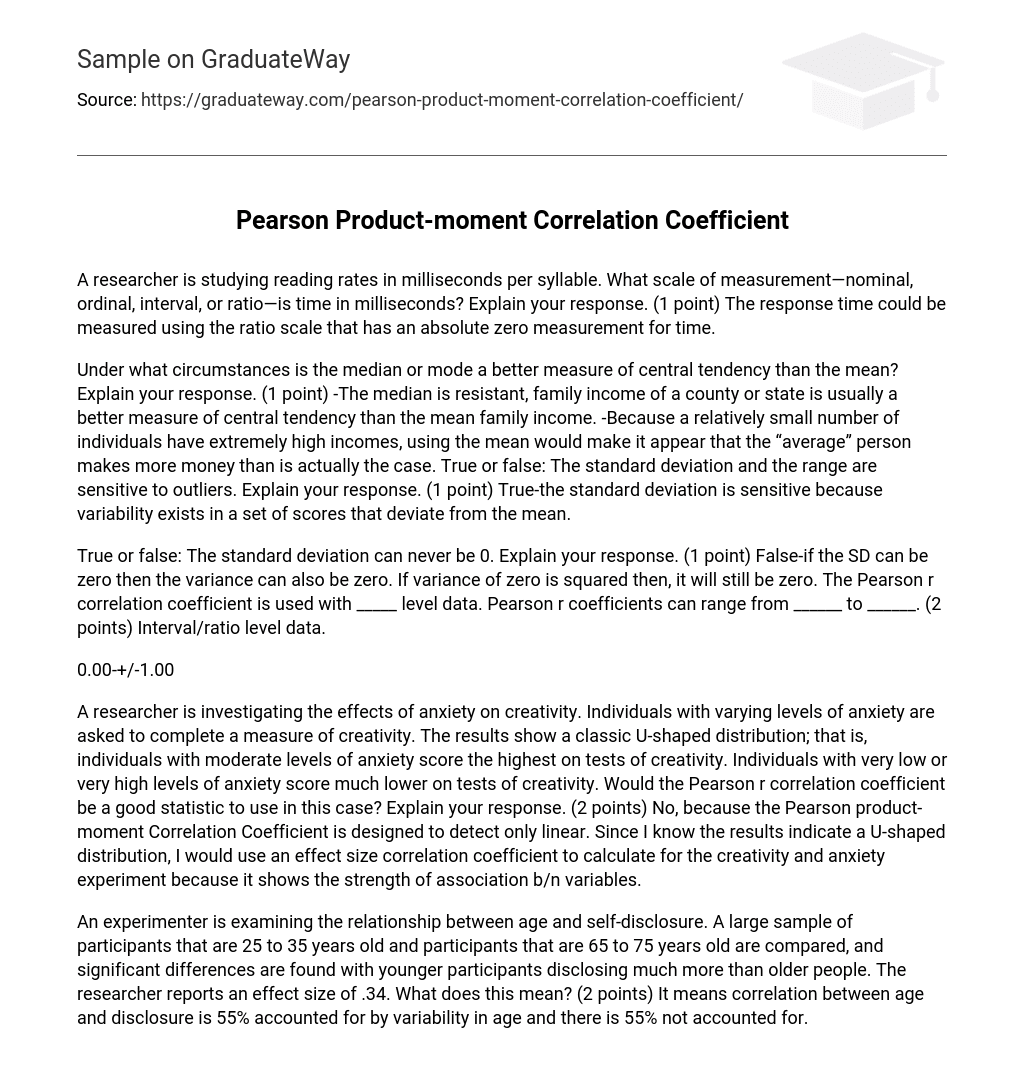A researcher is studying reading rates in milliseconds per syllable. What scale of measurement—nominal, ordinal, interval, or ratio—is time in milliseconds? Explain your response. (1 point) The response time could be measured using the ratio scale that has an absolute zero measurement for time.
Under what circumstances is the median or mode a better measure of central tendency than the mean? Explain your response. (1 point) -The median is resistant, family income of a county or state is usually a better measure of central tendency than the mean family income. -Because a relatively small number of individuals have extremely high incomes, using the mean would make it appear that the “average” person makes more money than is actually the case. True or false: The standard deviation and the range are sensitive to outliers. Explain your response. (1 point) True-the standard deviation is sensitive because variability exists in a set of scores that deviate from the mean.
True or false: The standard deviation can never be 0. Explain your response. (1 point) False-if the SD can be zero then the variance can also be zero. If variance of zero is squared then, it will still be zero. The Pearson r correlation coefficient is used with _____ level data. Pearson r coefficients can range from ______ to ______. (2 points) Interval/ratio level data.
0.00-+/-1.00
A researcher is investigating the effects of anxiety on creativity. Individuals with varying levels of anxiety are asked to complete a measure of creativity. The results show a classic U-shaped distribution; that is, individuals with moderate levels of anxiety score the highest on tests of creativity. Individuals with very low or very high levels of anxiety score much lower on tests of creativity. Would the Pearson r correlation coefficient be a good statistic to use in this case? Explain your response. (2 points) No, because the Pearson product-moment Correlation Coefficient is designed to detect only linear. Since I know the results indicate a U-shaped distribution, I would use an effect size correlation coefficient to calculate for the creativity and anxiety experiment because it shows the strength of association b/n variables.
An experimenter is examining the relationship between age and self-disclosure. A large sample of participants that are 25 to 35 years old and participants that are 65 to 75 years old are compared, and significant differences are found with younger participants disclosing much more than older people. The researcher reports an effect size of .34. What does this mean? (2 points) It means correlation between age and disclosure is 55% accounted for by variability in age and there is 55% not accounted for.





